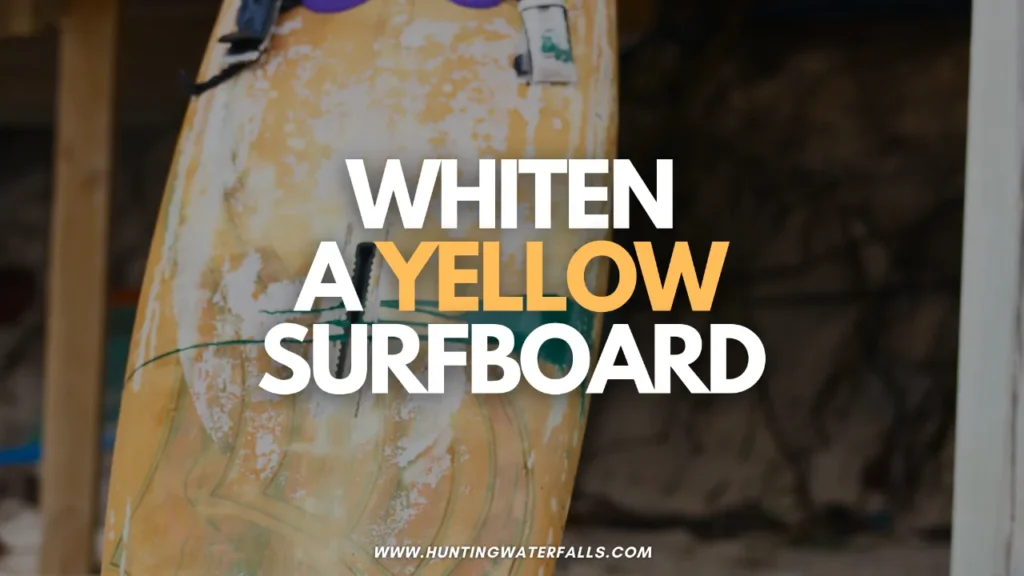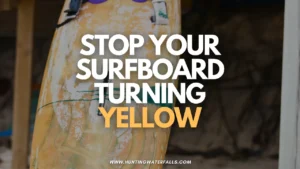A great-looking surfboard is part of what makes surfing so much fun.
Looks may not affect the performance, but I know I don’t want to go out with a dull yellow surfboard instead of a bright white one.
Unfortunately, after prolonged use all white surfboards will inevitably turn yellow.
Surfboard yellowing (oxidization) is different from getting dirty. It’s caused by chemical reactions on a molecular level in the resins used to make surfboards, so you can’t just clean it off. The change is permanent and the process can’t be reversed.
Oxidization also makes the surfboard materials weaker and more susceptible to damage. You’ll need to remove the yellowed resins if you want to whiten your surfboard and keep it in good shape.
Trying to whiten your surfboard is NOT easy and some of these processes are pretty extreme and may ruin your board. If they do work they are unlikely to bring your board back to store bought white.
You're better off stopping your surfboard from turning yellow in the first place by avoiding direct sunlight and heat as much as possible.
There are few ways to make your board whiter again. Only one of these methods is close to “permanent,” though.
The method you should use depends on how deep the yellowing goes.
Removing Discolored Surboard Wax
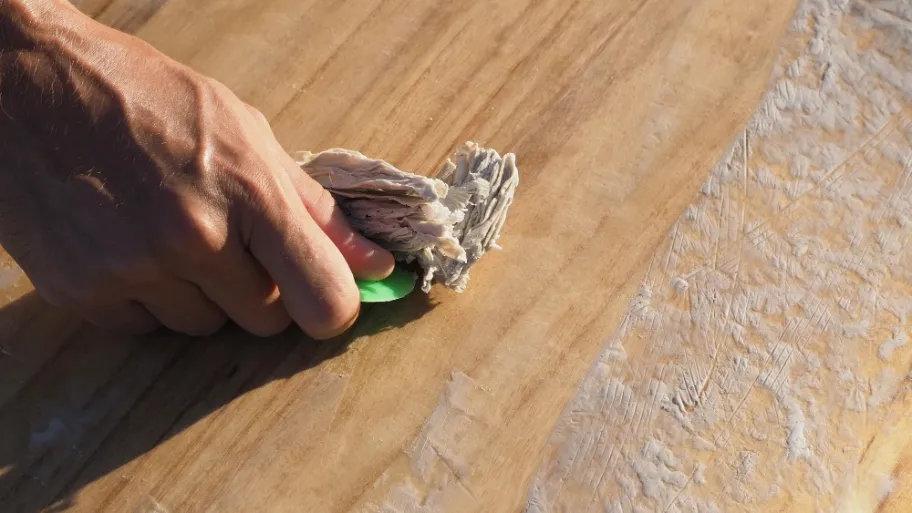
The gradual breakdown of surfboard wax can also sometimes cause discoloration. Sanding off the old wax and rewaxing your surfboard on a regular basis can remove this initial layer of discoloration.
This is only a temporary measure, though. The sun’s UV rays will, in time, penetrate the wax layer, plus the wax does not prevent yellowing from heat.
Sanding Your Surfboard
Sanding your surfboard will remove the discolored resins. Many surfers recommend a finer grit, such as 200 or higher, although this is not absolutely necessary. Rougher grits work too, but might make it easier to accidentally oversand the surfboard. Some surfers also recommend using a 3M Scotch Brite Pad.
Excellent starting abrasive pad for cleaning finishing, graining, denibbing and defuzzing.
Unfortunately, sanding the surfboard is only effective if it’s just the surface of the resin that has been affected. You won’t want to mess around too much with the inner foam core of the surfboard if it has started turning yellow.
Plus sanding your board too much will expose the foam underneath damaging your board and can cause more yellowing and even water logging.
Replacing a larger chunk of foam with epoxies will change the weight, and thus the performance of the surfboard.
Repainting Your Surfboard
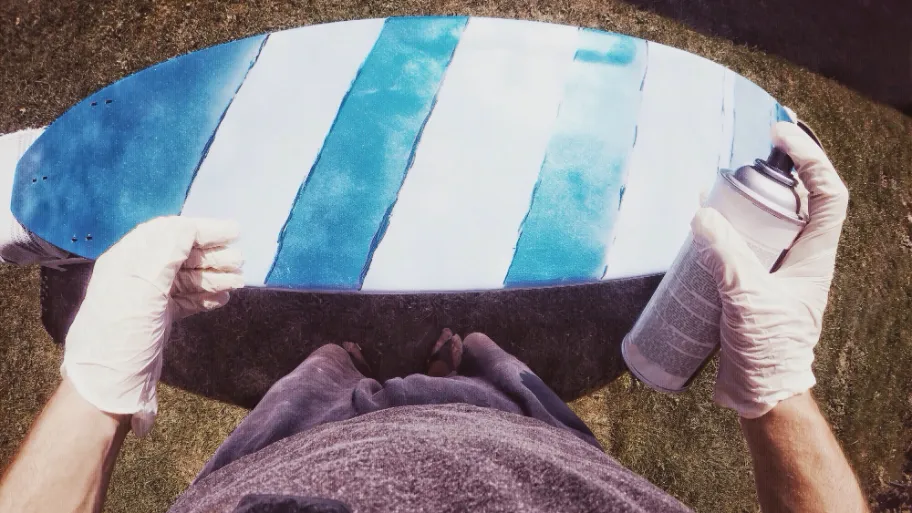
A new coat of paint is, ultimately, the only way to truly whiten a yellowed surfboard. The paint will protect the inner foam core of the board from UV rays. It will also cover the core so that, as the heat yellows the foam, it will not be visible.
Start by removing the wax by sanding it. Next, you’ll want to wash the board with acetone to remove any remaining wax residue. If you don’t, it will cause the paint to not stick as well as it should.
Some people suggest using an acetone-based nail polish remover, but these may be watered down and not as effective. It’s better to spend a little extra money. You can save the unused acetone for future repaintings or other boards in your quiver.
Paint sticks better to a rougher surface, so you’re next step is to give the board a light, thorough sanding.
Wipe down the board with a wet paper towel to remove any grit left from the sanding. Let the board dry completely, then start painting (acrylic paint is best). If you want to add designs, or maybe a two-tone color scheme to your board, tape off the parts you don’t want to get paint on.
Always let each layer of paint cure completely before adding a new one. This increases the longevity of the paint. You should also lightly sand each layer of paint to help the next one stick better (repeating the wash-down with wet paper towels also).
You can also add a few layers of acrylic clear coat once the painting is done. This will give your new paint job a little more protection against the usual wear and tear and potential scuffs and dings. You can skip this step, though, if you used a higher quality paint.
Other Methods Work For Dirt, But Not Yellowing
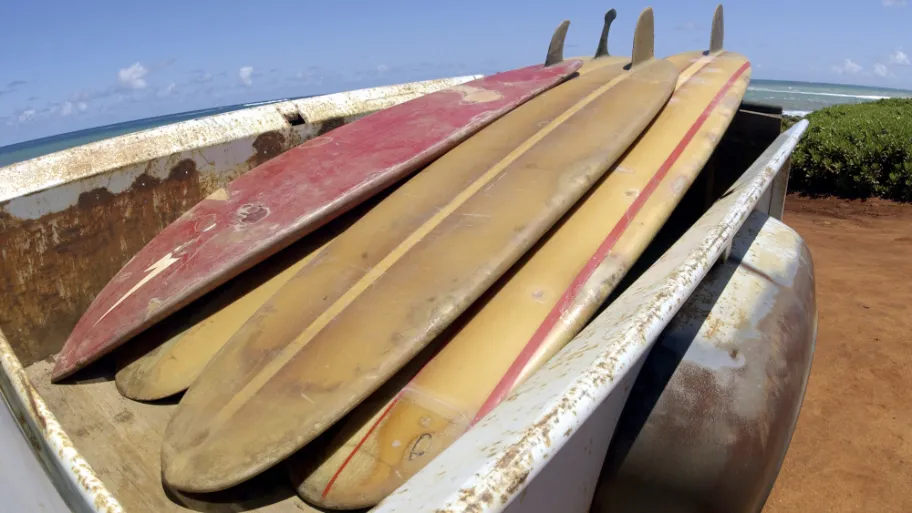
You may come across a few posts or articles online which recommend cleaning your board to remove discolorations. They suggest warm water and soap or bleach and natural substances such as lemon juice (citric acid), vinegar, or baking soda.
This only works for discolorations caused by dirt or salt water. They may remove the top layer of yellowed wax, but will not be able to undo the oxidization.
There is, in the end, no way to completely or permanently reverse surfboard yellowing. However, if you follow the above steps, you can refresh your board and getting it looking bright and brand new.

